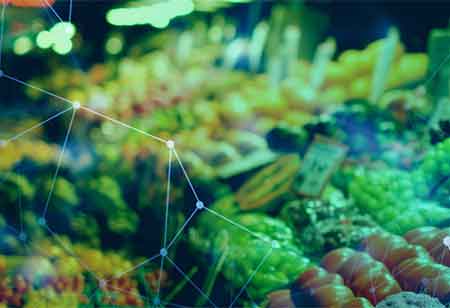Thank you for Subscribing to Food Business Review Weekly Brief
- Home
- Topics
- Alternative Proteins and Plant Based Food
- Beer and Wine
- Canned Beverages
- Coffee And Tea
- Food and Beverage Consulting
- Food and Beverage Financial Service
- Food And Beverages Marketing
- Food Distributors
- Food Ingredients
- Food Sustainability
- Plant Based Food and Beverages
- Seafood Suppliers
- Supplement Manufacturing
- Wine Investment
- News
- Vendor Viewpoint
- CXO Insights
- Conferences
- Newsletter
- CXO Awards
-
A Comprehensive Look at the Wine-Making Process
Harvesting, crushing, pressing, and fermenting are some of the essential steps in the wine-making process.

By
Food Business Review | Thursday, December 12, 2024
Stay ahead of the industry with exclusive feature stories on the top companies, expert insights and the latest news delivered straight to your inbox. Subscribe today.

Harvesting, crushing, pressing, and fermenting are some of the essential steps in the wine-making process.
FREMONT, CA: Wine-making has existed for thousands of years. It is a natural process with little human involvement. Mother Nature provides everything required to produce wine; it is up to humans to enrich, improve, or completely destroy what nature has provided, as anyone with substantial wine-tasting experience can attest. Wine-making consists of five main processes or steps: harvesting, crushing and pressing, fermentation, clarifying, and aging and bottling. Undoubtedly, there are several deviations and changes along the road. In fact, it is the variations and minor deviations at any stage of the process that keep life fascinating. They also distinguish each wine, contributing to its brilliance or ignominy. With one difference, the methods for creating white and red wine are virtually identical. Rosé wines, like fortified or sparkling wines, require additional human intervention to be successful.
The steps of the wine-making process are discussed below:
The harvest: Harvesting or picking is undoubtedly the first stage in the real wine-making process. Wine would not exist without fruit, and no fruit other than grapes can produce a consistent amount of sugar to yield enough alcohol to preserve the resulting beverage, nor do other fruits contain the required acids, esters, and tannins to produce natural, stable wine on a consistent basis. For this and other reasons, most winemakers agree that wine is made in the vineyard. The process of producing good wine necessitates that the grapes are harvested at a specific time, preferably when physiologically ripe.
Typically, time to harvest is determined by a combination of science and old-fashioned tasting, with consultants, winemakers, vineyard managers, and proprietors all having a say. Harvesting can be done mechanically or manually. However, many estates choose to harvest manually because mechanical harvesters might be too harsh on the grapes and vineyard. When the grapes arrive at the vineyard, reputed winemakers sort the bunches, removing any rotting or underripe fruit before crushing.
Crushing and pressing: Crushing the entire cluster of fresh, ripe grapes is traditionally the next stage in the wine-making process. Today, mechanical crushers continue the time-honored approach of stomping or trodding grapes into what is known as must. For thousands of years, men and women danced the harvest dance in barrels and presses, kicking off grape juice's magical metamorphosis from concentrated sunlight and water bound together in clusters of fruit to the most nutritious and mystical of all beverages - wine. Change, like everything else in life, involves both loss and gain.
Mechanical pressing has also increased wine quality and lifespan, lowering the winemaker's reliance on preservatives. It's worth noting that not all wine begins in a crusher. Winemakers may choose to start fermentation inside uncrushed entire grape clusters, allowing the grapes' natural weight and the fermentation initiation to rupture the grape skins before pressing the uncrushed clusters.






